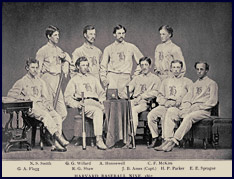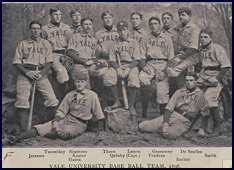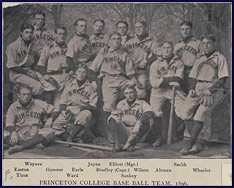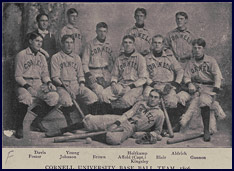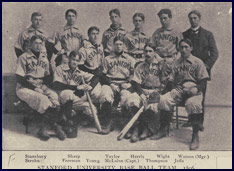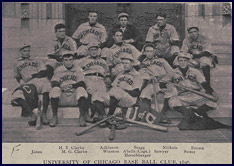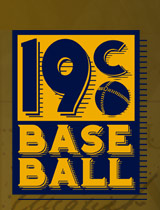History of the Strike
By Eric Miklich

he "called strike" was proposed by Daniel "Doc" Adams of the Knickerbocker Club and accepted as part of the playing rules during the First Base Ball Convention held in New York in 1858. This rule is still inexistence today. There is a misnomer that a foul batted ball was not a strike during the 19th century. In fact it was and allowed to be called as early as 1887, but was subject to the umpire's discretion.
Below is a synopsis of the history of the strike in all forms except the "Foul Strike."
1857-1870
- A ball struck at and missed by the Batsman without its touching his bat.
- A ball legally delivered by the Pitcher and with in the legitimate reach of the bat not swung at by the Batsman.
There was no strike zone specified in the playing rules. It is generally accepted that the strike zone was 12 inches above the ground to the batters shoulders and within fair reach of the Batsman bat.
1871 (National Association of Professional Base-Ball Clubs)
1875 (NA), 1876 (National League of Base Ball Clubs)
1886 (NL), 1882 (American Association of Base Ball Clubs)
1886 (AA) and 1884 (Union Association)
- A ball struck at and missed by the Batsman without its touching his bat.
- A ball legally delivered by the Pitcher at the height called for by the Batsman and over Home Base, but not struck at by the Batsman.
Beginning in 1871, the batter was given the opportunity to ask the Pitcher to deliver the ball in one of two areas. A "low ball" was required to pass between the knee and the waist of the batsman and over Home Base. A "high ball" was required to pass between the waist and the shoulders of the batsman and over Home Base. If the batter did not call for a ball upon taking his position the umpire was allowed to call strikes on pitched balls that passed between the knees and shoulders of the Batsman and over Home Base. The Batsman was not allowed to change or call for his pitch after the first ball was delivered to Home Base by the pitcher.
The Umpire was also instructed in 1871, not to make a call on the first delivery by the Pitcher to the Batsman, unless swung at and missed or hit foul. This ended after the 1874 season.
In 1872, the "low ball" was changed and defined as being twelve inches off the ground to the Batsman waist and over Home Base.
In 1877, the rule for the lower portion of the "low ball" was changed back to the Batsman's knee and the belt replaced the waist in determining the upper and lower portions of the area called by the Batsman.
After the 1886 season ended, NL and AA, the batter could no longer call for a low or high ball.
1887 (NL + AA) - 1888 (NL + AA)
NOTE: The National League and the American Association were two separate businesses but began using the same rules in 1887, and continued to do so until 1891, when the American Association had four of its clubs "absorbed" by the National League.
- A ball struck at and missed by the Batsman without its touching his bat.
- A ball legally delivered by the Pitcher that does not pass below the knee and above the shoulder and over Home Base, but not struck at by the batsman.
- An obvious attempt to make a foul hit. .
The third rule is technically the beginning of the foul batted ball strike. It was not consistent as the umpire had to make a judgment call when he felt that it was done intentionally and every umpire would view those instances in a different manner.
Noted 19th century base ball expert, historian and author, David Nemec, adds that, "As is the case in almost every significant rule change, it is often impossible now to determine the exact thinking that went into the change. This is most evident in the foul strike. I suspect the 1887 rule was imposed mainly to target Mike Kelly, but it's nearly impossible now to establish this conclusively. The rule regarding foul hits was almost never enforced unless a player really ticked off an umpire. The foul bunt rule except on sacrifice attempts was also almost never enforced until 1895."
The Rules: History of the Strike Continued ![]()
The Rules of the Game: A Compilation of the Rules of Baseball 1845–1900 ![]()
